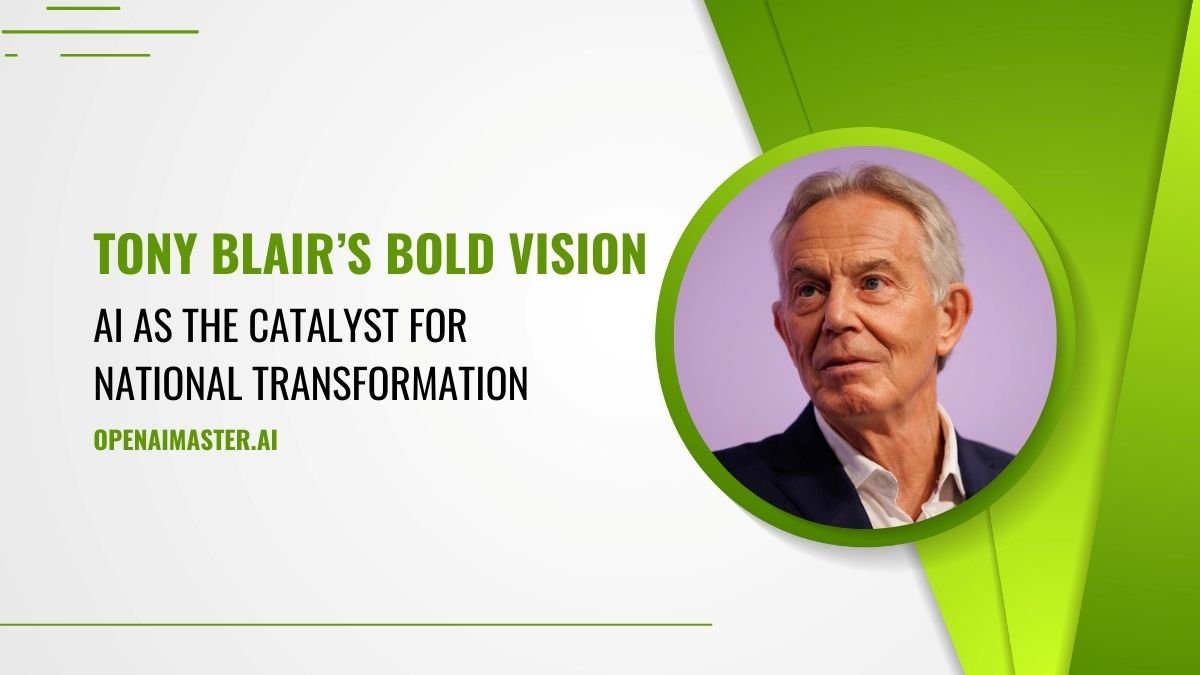In a groundbreaking address that has sent ripples through political and technological circles, former UK Prime Minister Tony Blair has unveiled an ambitious vision for the nation’s future, with artificial intelligence (AI). Blair’s proposal, which he claims could revolutionize public services and boost the economy, has sparked both excitement and debate across the country.
Blair’s vision is the belief that AI could be the key to unlocking unprecedented economic growth and efficiency in the UK. “We’re standing on the brink of a technological revolution,” Blair stated, “one that could transform every aspect of our society for the better.”
The former Labour leader, known for his ‘Third Way’ politics during his tenure as Prime Minister from 1997 to 2007, has always been an advocate for modernization. Now, through his think tank, the Tony Blair Institute for Global Change, he’s pushing for what he sees as the next great leap forward.
One of the most striking claims in Blair’s proposal is the potential for massive cost savings in government operations. According to his think tank’s analysis, AI could save the UK government up to £200 billion over five years. To put this in perspective, that’s roughly equivalent to the entire annual budget of the National Health Service (NHS).
But how exactly would these savings be achieved? Blair suggests that AI could automate many routine tasks currently performed by government workers. For instance, in the Department of Work and Pensions, Blair claims that AI could take over 40% of tasks. This doesn’t necessarily mean job losses, Blair is quick to point out. Instead, he envisions workers being freed up to focus on more complex, human-centric tasks that AI can’t handle.
“Imagine a public sector where tedious paperwork is handled by AI, allowing our civil servants to focus on what really matters – serving the public,” Blair explained.
To oversee this AI revolution, Blair proposes creating a “mission control” at the heart of government. This central hub would coordinate AI adoption across different departments and ensure a cohesive strategy. He also suggests appointing chief productivity officers in major departments to drive this change.
But Blair’s vision extends far beyond just government efficiency. He sees AI as a tool to transform key public services, particularly healthcare and education.
In healthcare, Blair envisions AI assisting doctors with diagnoses, managing patient records, and even predicting health issues before they become serious. “With AI, we could move from a reactive healthcare system to a proactive one,” Blair stated. “Imagine catching diseases early, before they become life-threatening. That’s the power of AI in healthcare.”
In education, Blair advocates for what he calls “AI-enabled education.” This could involve personalized learning experiences tailored to each student’s needs and learning style. “Every child learns differently,” Blair explained. “AI could help us cater to those individual needs in a way that’s simply not possible with traditional teaching methods.”
One of the more controversial aspects of Blair’s proposal is his continued advocacy for digital identification systems. Blair argues that digital IDs, combined with AI, could create a more personalized and efficient public service experience. Citizens could access services more easily, while the government could reduce fraud and streamline operations.
However, this idea has faced criticism from privacy advocates who worry about the potential for misuse of personal data. Blair acknowledges these concerns but insists that proper safeguards can be put in place. “We need to have an open and honest conversation about the benefits and risks,” he stated. “But we can’t let fear hold us back from progress.”
Blair’s vision has been met with mixed reactions. Proponents praise his forward-thinking approach and emphasis on embracing new technologies. Critics, however, argue that his vision may be overly optimistic and fails to fully address the potential downsides of widespread AI adoption.
Some experts worry about job displacement. While Blair insists that AI will free up workers for more meaningful tasks, skeptics argue that not all displaced workers will be able to transition easily to new roles. There are also concerns about the limitations of AI, particularly in fields like healthcare where human judgment and empathy are crucial.
Despite these criticisms, Blair remains steadfast in his belief that the UK must embrace AI to remain competitive on the global stage. He calls for a strategic and proactive approach, urging the government to establish an AI capability within 10 Downing Street and to support the spread of AI technologies across the economy.
“We’re at a crossroads,” Blair concluded in his address. “We can either lead the AI revolution or be left behind. The choice is ours.”
As the debate continues, one thing is clear: Tony Blair’s AI vision has reignited discussions about the future of technology in the UK. Whether his ideas will be fully embraced remains to be seen, but there’s no doubt that AI will play a significant role in shaping the nation’s future.
For now, the UK finds itself grappling with big questions: How can we harness the power of AI while addressing valid concerns? How do we ensure that the benefits of this technology are shared equitably across society? And perhaps most importantly, how do we prepare for a future where AI is an integral part of our daily lives?
As the country ponders these questions, Tony Blair’s bold vision serves as a catalyst for a national conversation about the role of technology in shaping the UK’s future. Whether you agree with his proposals or not, one thing is certain: the AI revolution is coming, and the UK must decide how it wants to respond.

